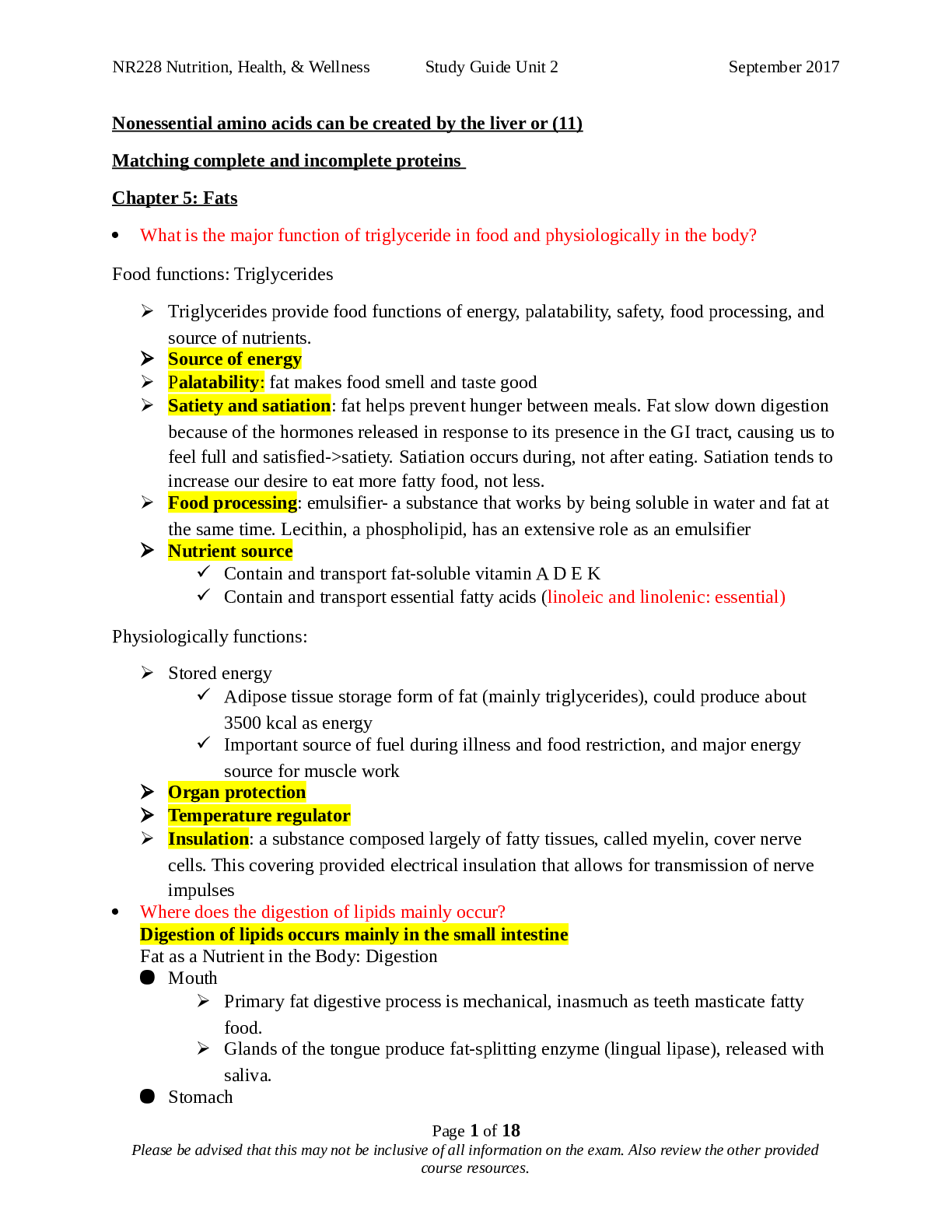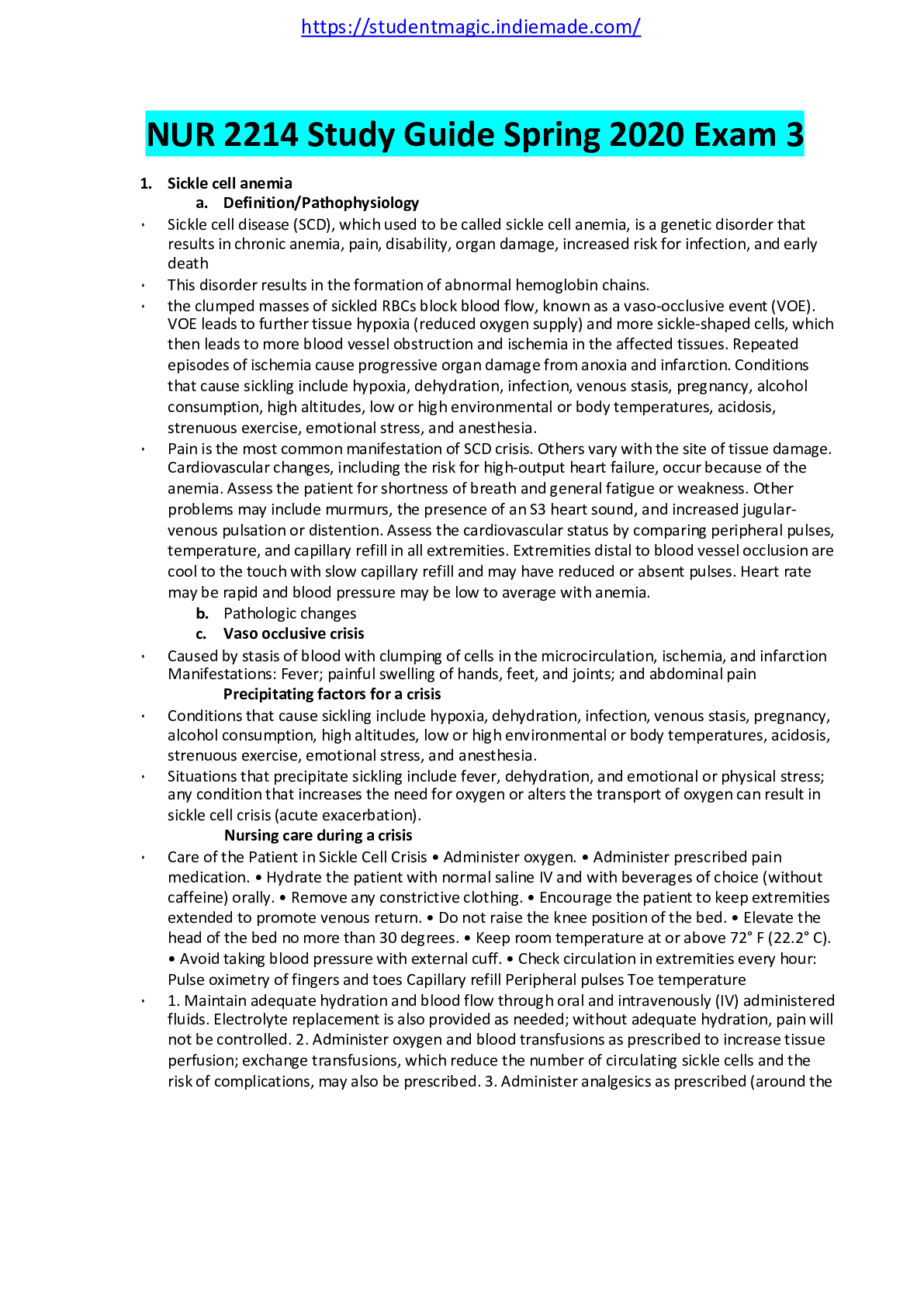*NURSING > STUDY GUIDE > NR503 Best Study Guide Ever (All)
NR503 Best Study Guide Ever
Document Content and Description Below
A 12-year-old boy is brought to the office for evaluation of hives. He has no significant past medical history and no history of allergies. He has just joined the middle school soccer team and noticed... that he gets hives about 10 minutes into practice. The hives are itchy and consist of irregular blotches on his legs and trunk, about 10–20 cm in size, and they persist for about 30 minutes. He does not experience swelling of the lips or oropharynx and denies any wheezing or shortness of breath. His physical examination is normal without skin lesions or oral swelling at that moment, and his lungs are clear. After evaluation, he is diagnosed with urticaria. In this patient scenario, the urticaria (hives) surfaced 10 minutes into soccer practice suggesting a form of physical urticaria called cholinergic urticaria. There are two types of urticaria, the first is spontaneous urticaria with two subtypes (acute or chronic) and the second is inducible urticaria with nine subtypes (cold, delayed pressure, heat, solar, symptomatic dermographism, vibratory angioedema, aquagenic, cholinergic, and contact) (Kulthanan et al., 2016). Acute urticaria (AU) recur for less than six weeks, while chronic urticaria (CI) recur for more than six weeks (Kulthanan et al., 2016). Inducible urticaria or physical urticaria can be triggered specifically by physical stimuli and in this circumstance, the patient’s core body temperature appears to trigger hives (Kulthanan et al., 2016). Considering physical activity appears to be the precipitating factor, cholinergic urticaria is likely. Cholinergic urticaria is characterized by pinpoint, intensely pruritic wheals with surrounding erythema which appear after sweating caused by an increase in body temperature (Fukunaga et al, 2018). This type of urticaria most commonly affects the trunk of the body with hives that are usually 1-3 mm in diameter with red halos then the hives become larger in size and coalesce with one another making them appear larger . The hives can occur anywhere on the body except for the palms, soles,and axillae (Fukunaga et al, 2018). The exact pathogenesis of urticaria is not completely confirmed but is reported as a physiological reaction to cutaneous mast cell discharge of chemical mediators such as histamine, prostaglandins, bradykinin, neutrophils, and other vasoactive substances that result in the escape of plasma from blood vessels into dermal tissue (Fukunaga et al, 2018). This causes local vasodilation which in turn triggers the erythema, the increased permeability that manifests as edema, and the activation of sensory endings in the skin that result in pain and pruritus (Fukunaga et al, 2018). Other leukocytes involved in the pathogenesis of urticaria include basophils, eosinophils, as well as neutrophils, and CD4+ T cells (Fukunaga et al, 2018). The causal factor of angioedema (tissue swelling) results from a local increase in vascular permeability, which often manifests in the face, oropharynx, and genitalia (Fukunaga et al, 2018). This inflammation can be painful and itchy (Fukunaga et al, 2018). Hives affect the superficial skin layers (papillary dermis), whereas angioedema can involve the submucosa, the deeper reticular dermis, and subcutaneous tissues (Fukunaga et al, 2018). Hives and angioedema often co-occur, but they can also occur separately. Characteristically the hives arise spontaneously and the lesion resolves within a 24 hour period (Fukunaga et al, 2018). The first and non-pharmacologic treatment recommendation is the avoidance of known provoking stimuli but would be difficult in this situation and have a negative impact on the patient’s daily functioning (Powell et al., 2015). The first pharmacological recommendation for children with CU consists of non-sedating antihistamines such as loratadine, fexofenadine, and cetirizine (Powell et al., 2015). Patients with sleep disturbances associated with CU can benefit from sedating antihistamines such as hydroxyzine and diphenhydramine (Powell et al., 2015). Sedating antihistamines are often avoided due to the risk of psychomotor impairment with the potential to impact on the child’s safety and education(Powell et al., 2015). Potential complications of CU include urticarial vasculitis (UV), which can indicate internal organ involvement of urticaria (Powell et al., 2015). As mentioned before angioedema can coincide with urticaria, which can potentially be life-threatening the larynx and vocal cords are involved. Another complication associated with CU is anaphylactic shock. Approximately 50–80% of children with chronic urticaria have associated angioedema (Powell et al., 2015). Fortunately, chronic urticaria/angioedema in childhood is usually not life-threatening (Powell et al., 2015). It would be important to assure the patient and parents that CU in childhood is rarely a severe disease and usually resolves on its own over time (Fukunaga et al, 2018). Most patients are responsive to treatment with antihistamines and avoidance of triggers (Fukunaga et al, 2018). They should take medications as prescribed, avoid triggers if possible, and seek medical attention if symptoms get worse. Though symptoms usually resolve within 24 hours, many patients and parents are concerned about the physical appearance of hives and angioedema (Fukunaga et al, 2018). They should be assured that no permanent pigment changes or scaring will occur unless it is from scratching the hives (Fukunaga et al, 2018). They should be educated to moisturize the skin well, avoid hot baths/showers, only use prescribed medication (oral and/or topical), and resist the urge to scratch. The intensely itchy hives may impair quality of life or disturb sleep (Fukunaga et al, 2018). It is important for patients and parents to be educated on the cause since it is common for children to miss a significant amount of school, due to a lay perception that their appearance is infectious or allergic and fear that the child is sick (Powell et al., 2015). [Show More]
Last updated: 6 months ago
Preview 1 out of 3 pages
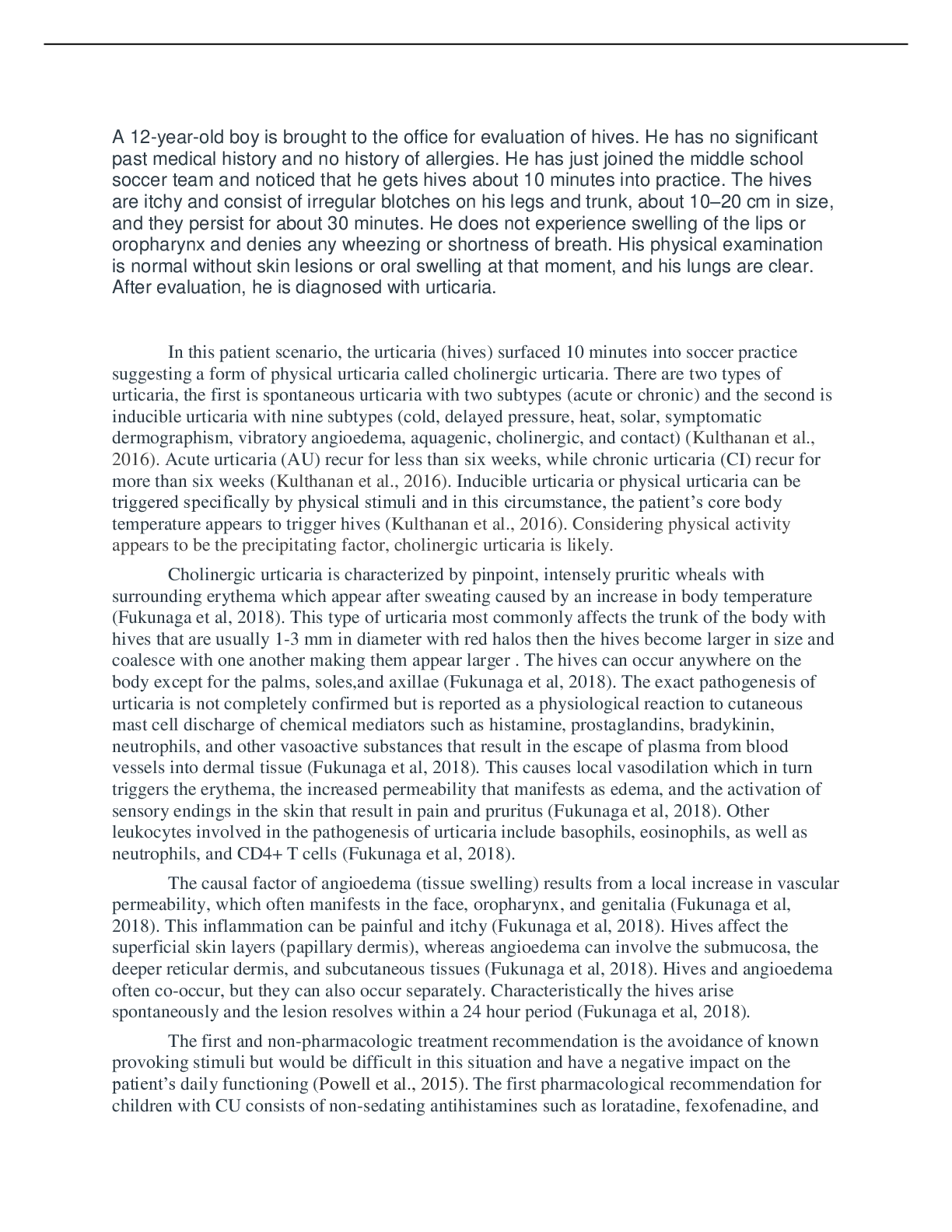
Reviews( 0 )
Document information
Connected school, study & course
About the document
Uploaded On
Aug 06, 2021
Number of pages
3
Written in
Additional information
This document has been written for:
Uploaded
Aug 06, 2021
Downloads
0
Views
58



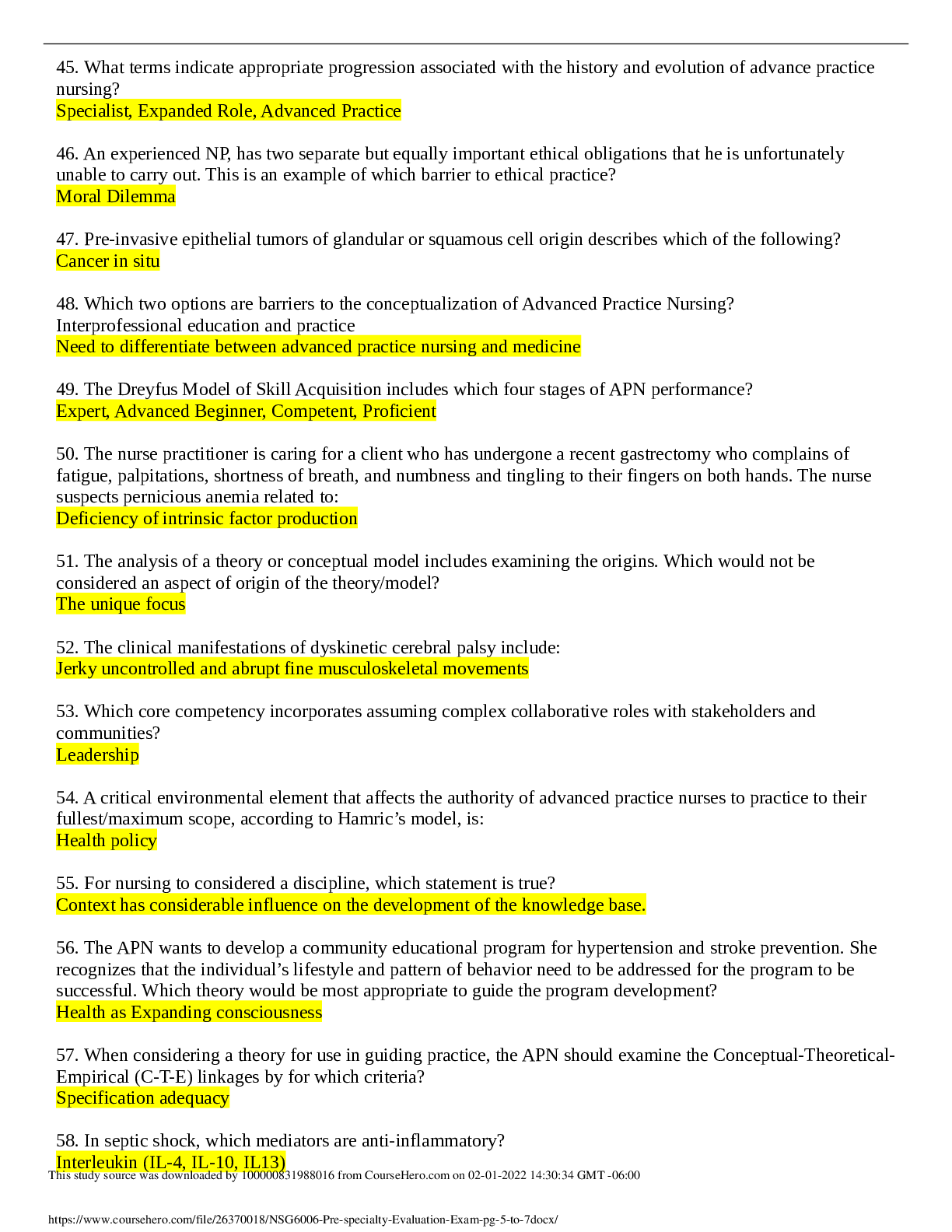




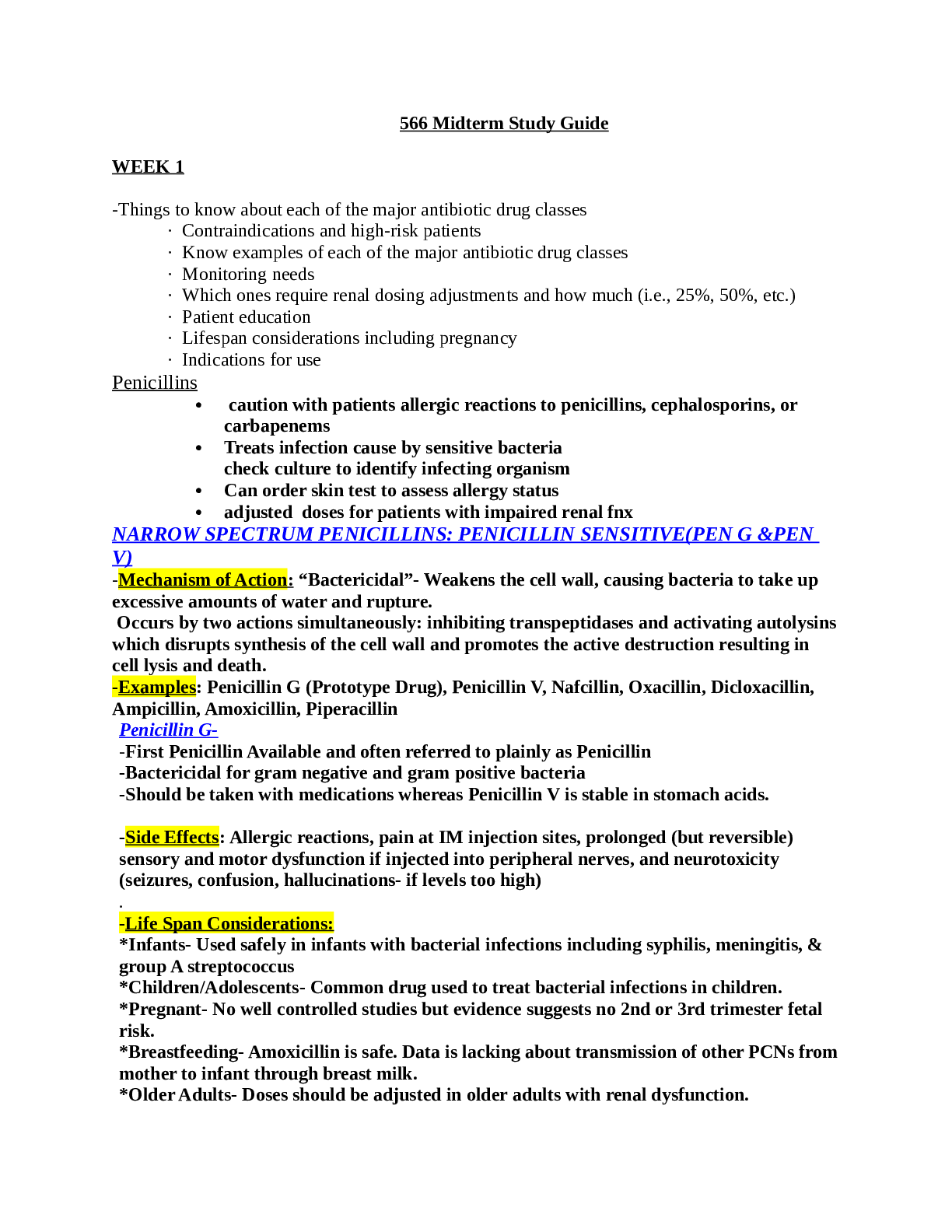
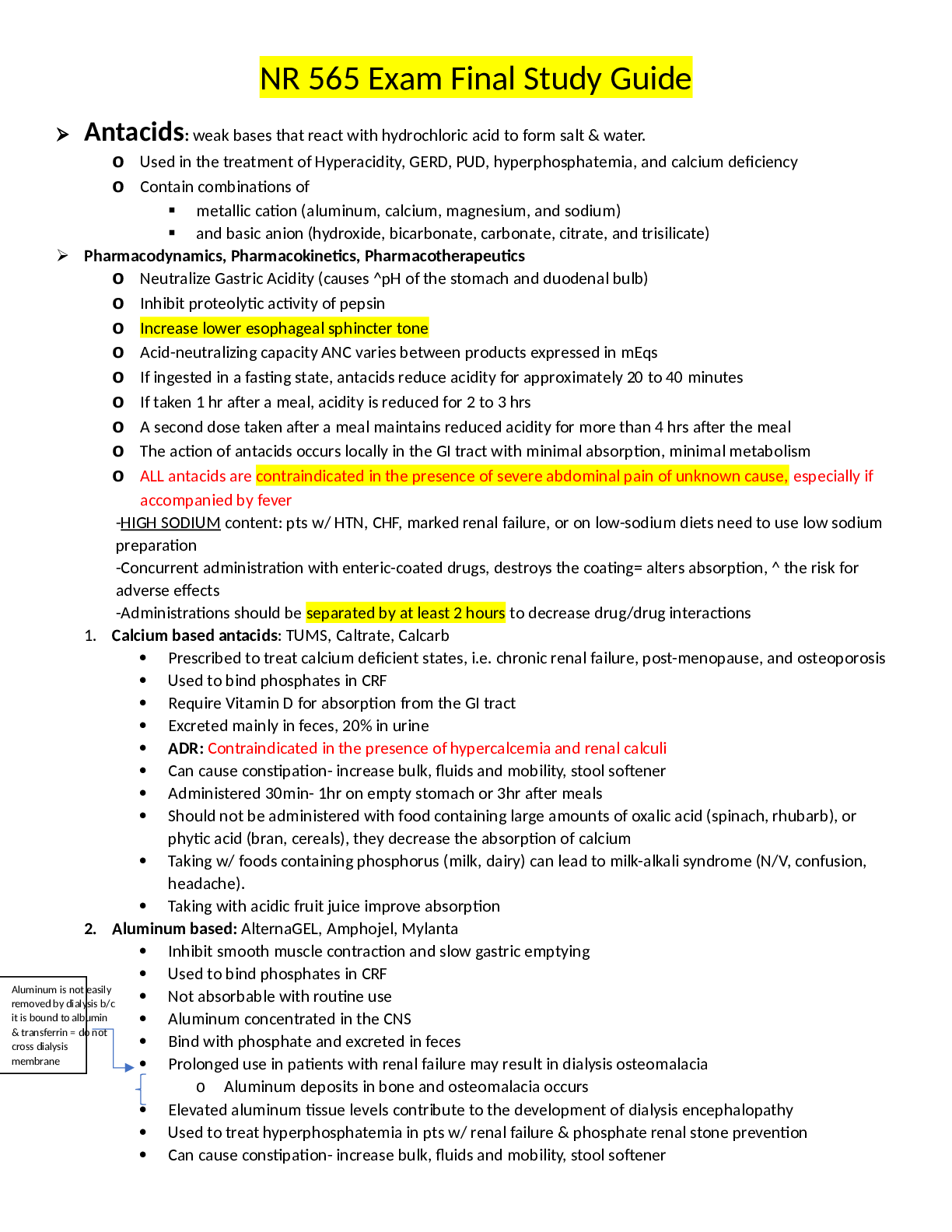


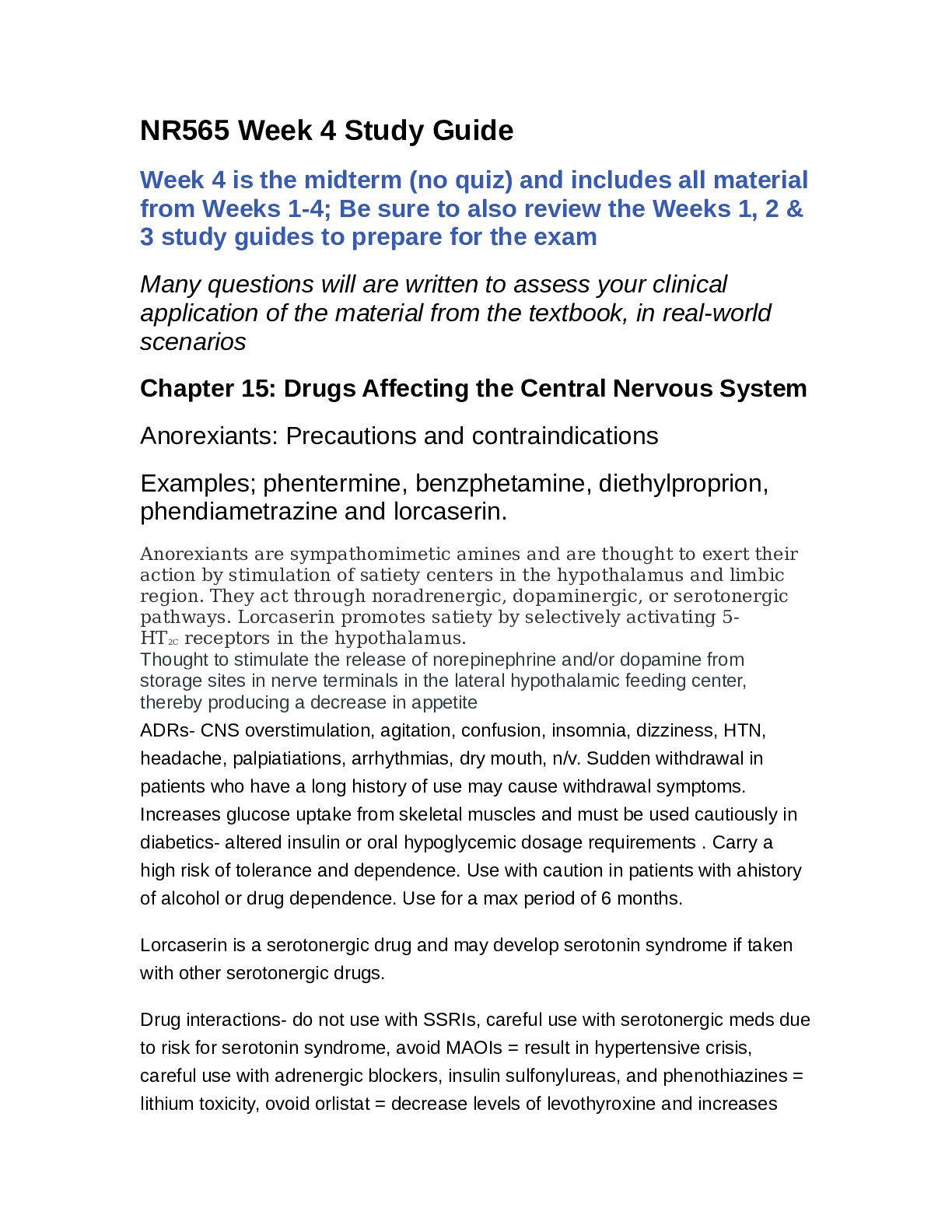
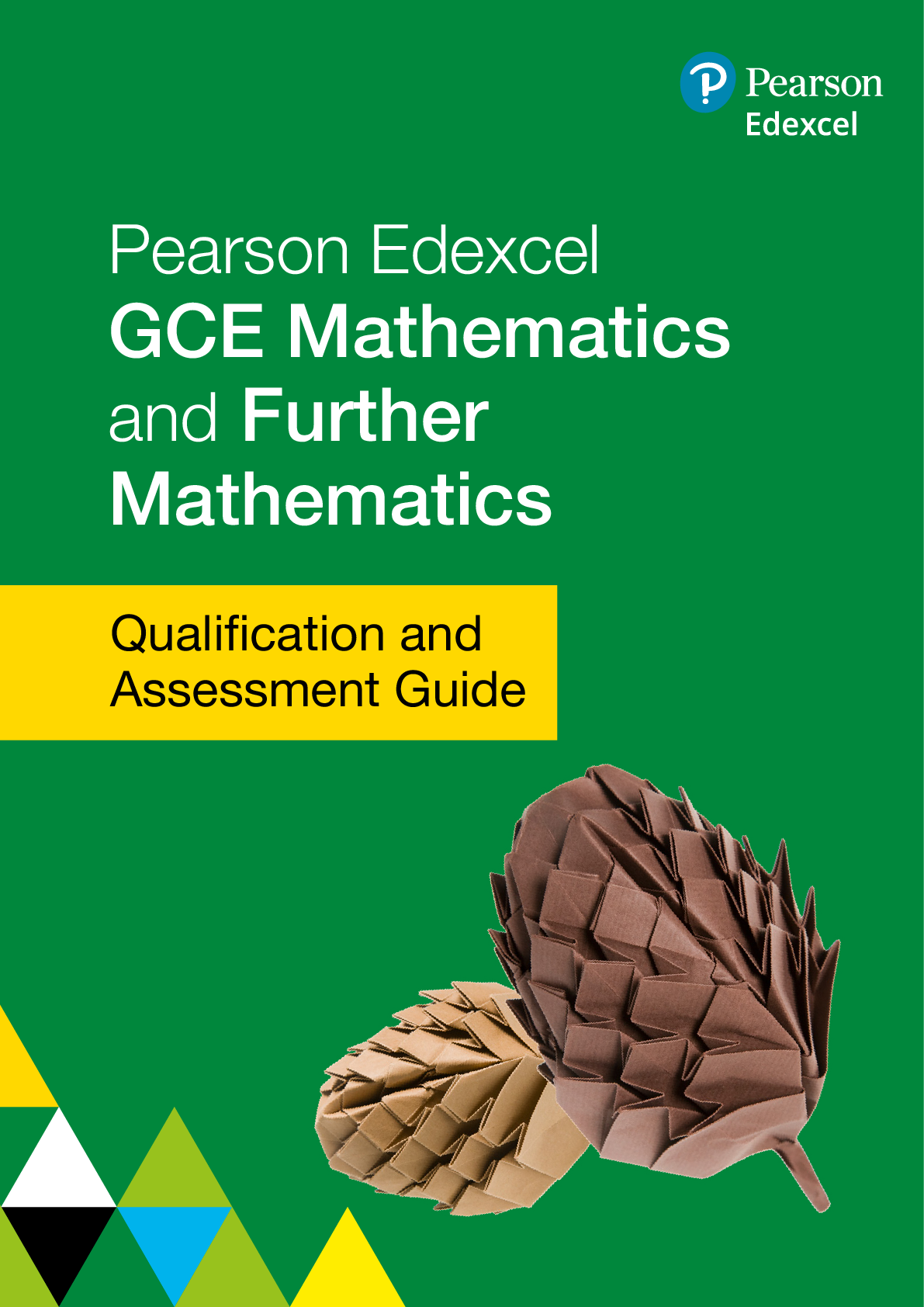

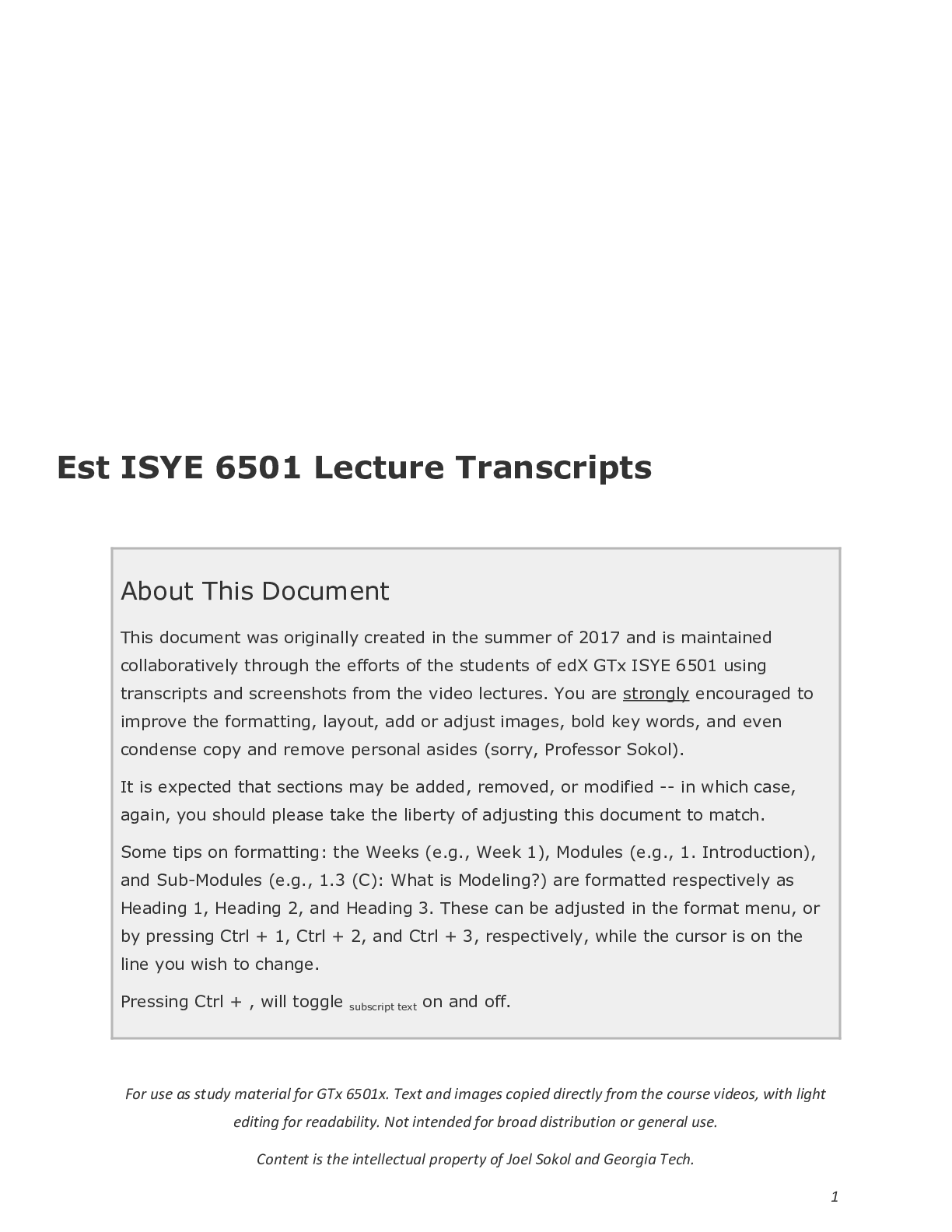
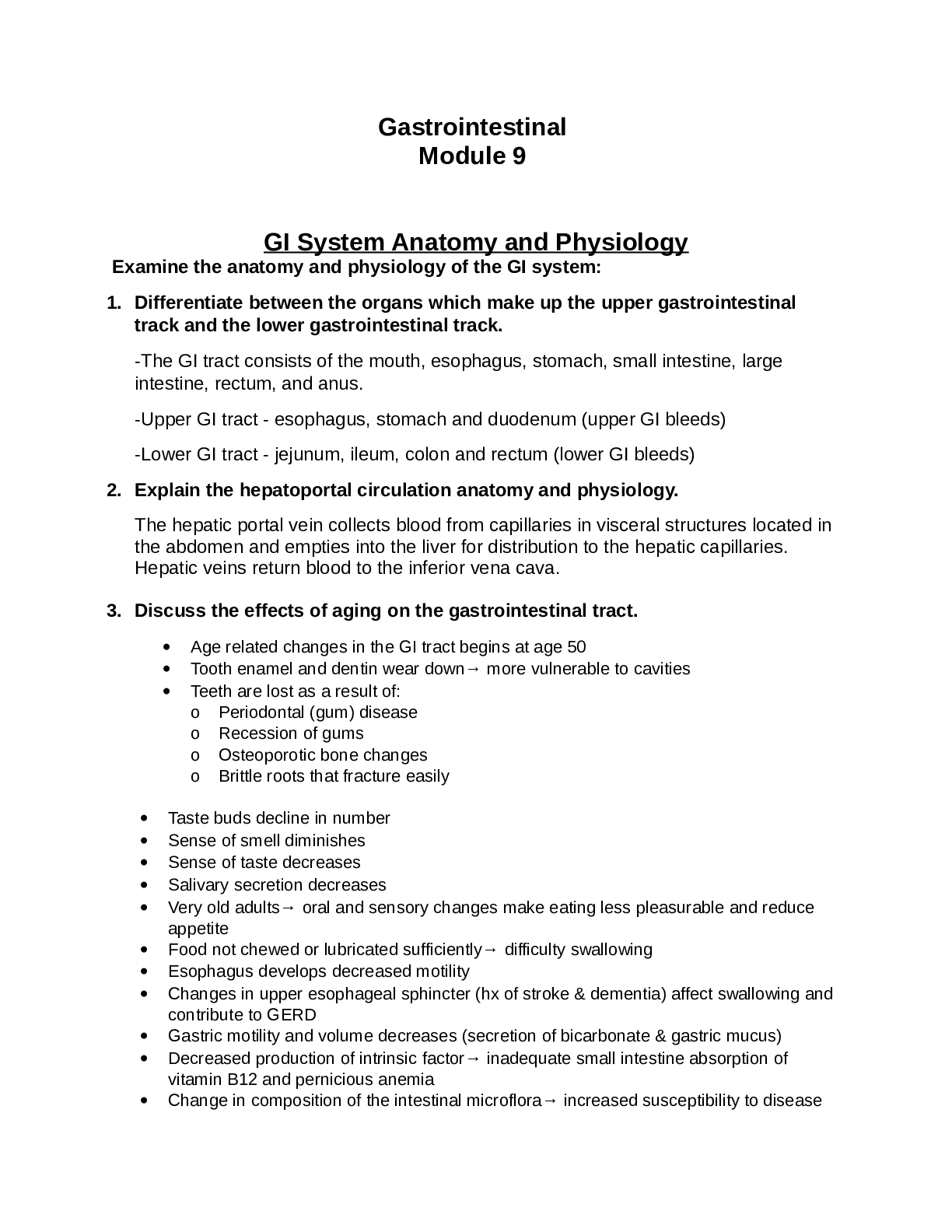
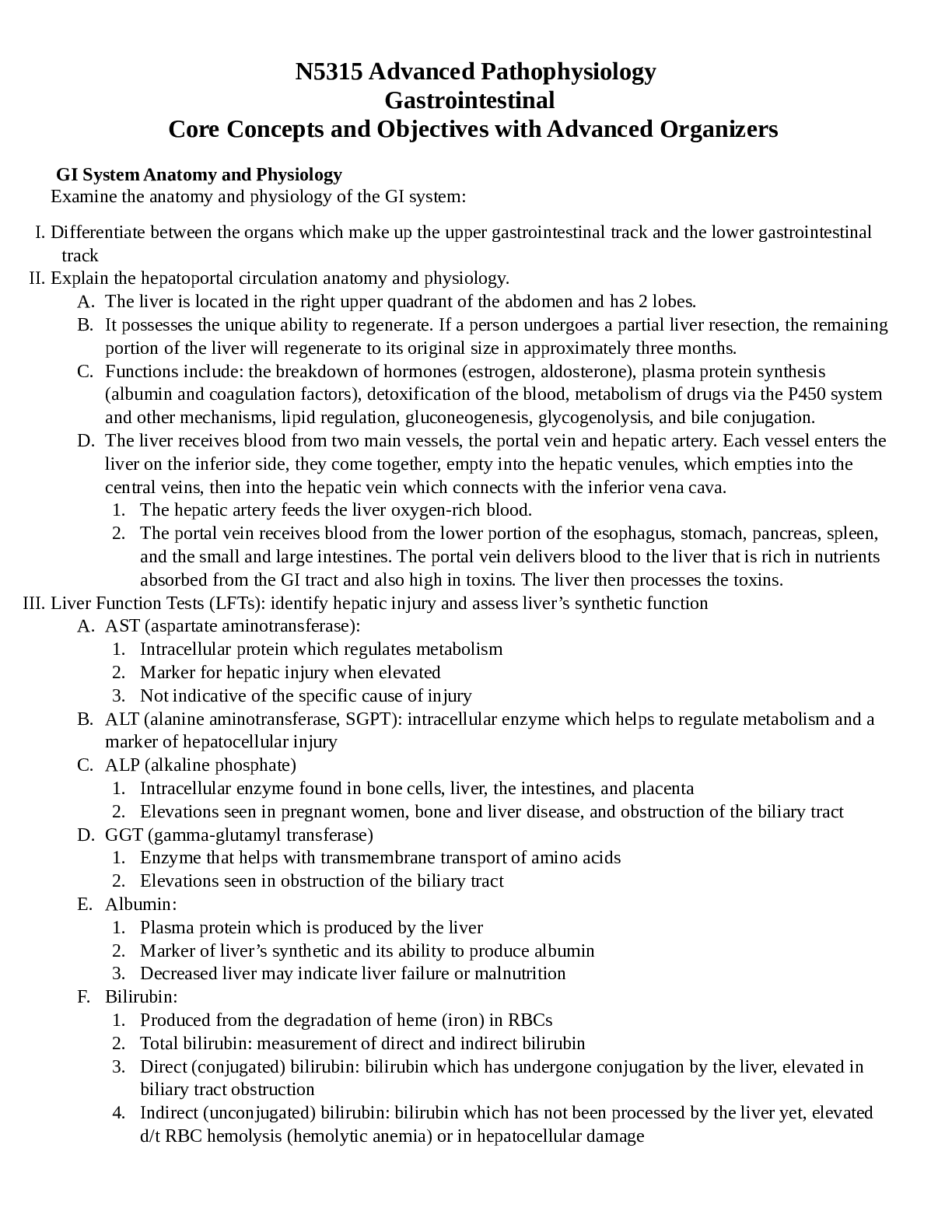
.png)

.png)
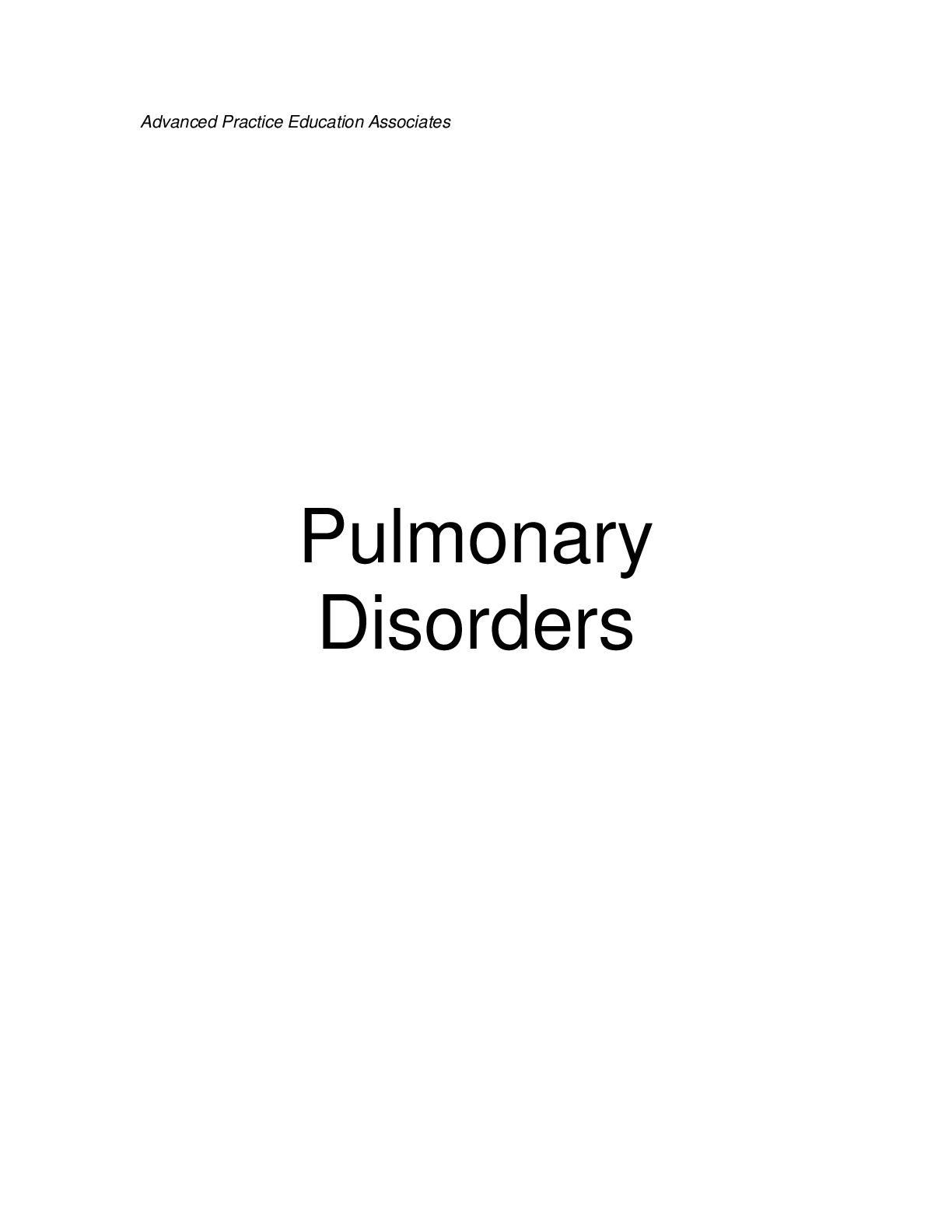
.png)





